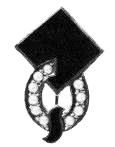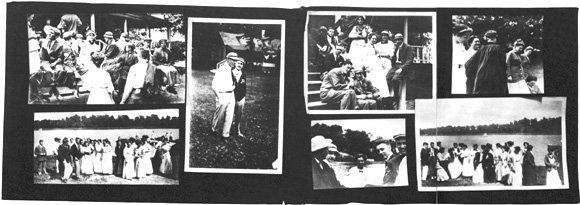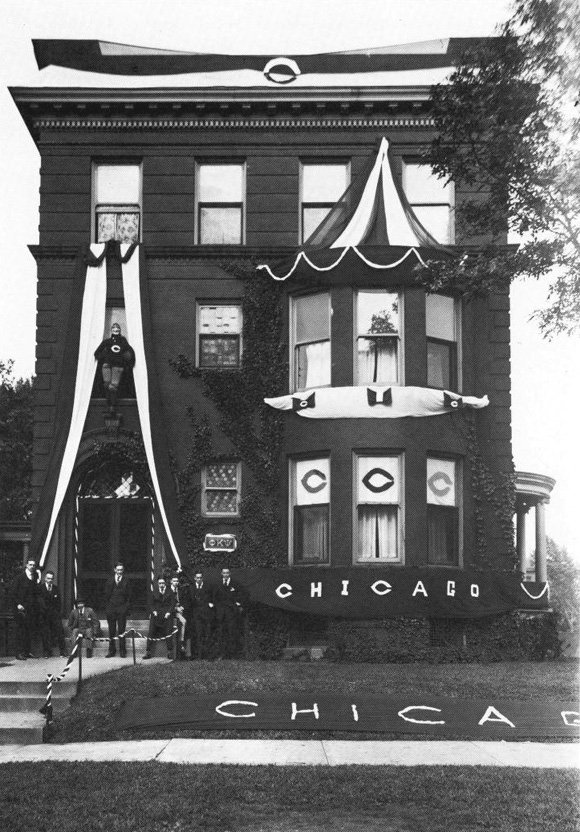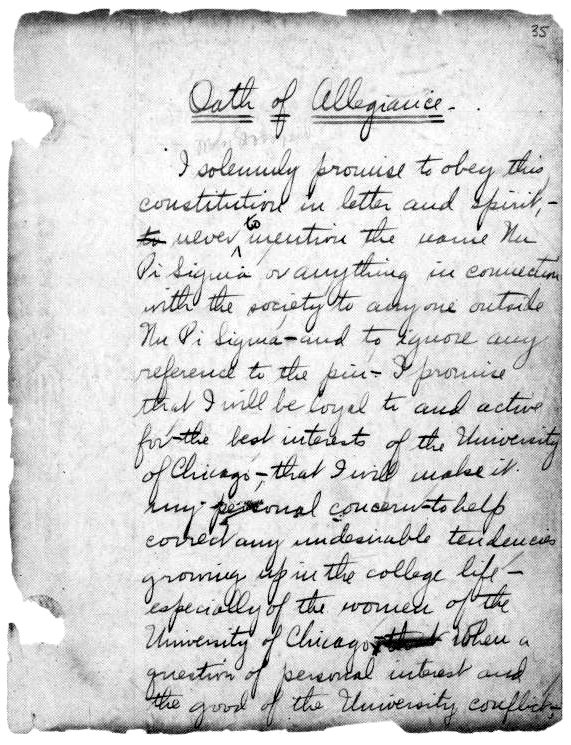Women's Clubs
Harper and Talbot benefited from an antisorority sentiment that existed among many University women, particularly those who had become involved in the flourishing, non-Greek social clubs. Talbot, in a letter to her mother, admitted that "there is really no reason why the sororities should not come, except the feeling that they are undesirable." In point of fact, the women's clubs thrived on the same exclusivity as the fraternities and soon took on many of the trappings and rituals of sororities.
The founding of the two women's clubs, the Esoteric in 1894 and the Quadranglers a year later, was heartily supported by the administration. Marked by weekly teas and "cozies," quarterly athletic "play days," and punctuated by an annual formal dinner party, these women's clubs provided, in the view of Harper and Talbot, an appropriate form of recreation and socialization. The Mortar Board, established in 1894, was even closer to Harper's conception of an ideal club, for its purpose was both social and cultural. The Mortar Board sponsored "cozies," skits, and an annual mother-daughter tea, in addition to literary meetings which created, for Harper, a proper blend between the demands of academia and the need for social outlets.
As an important focus of
social activities, the women's clubs which were formed in the first
quarter century endured and grew in popularity. The total number of
women's clubs increased more slowly than did the fraternities. In 1928,
there were only a dozen women's clubs compared to thirty-three fraternities.
But while the number of fraternities fell to just ten by 1945,
women's clubs during the same period expanded to fifteen. Meanwhile,
their annual activities, such as the Interclub Sing, Ball, and Rush,
had become campus traditions.
After this peak during World War Il, though, women's clubs suffered a decline. By the early 1970s the last of the original women's organizations faded away to be replaced by less traditional and more politically oriented women's groups like the Women's Radical Action Project (WRAP) and the Women's Union. These new clubs sought to redefine women's roles at the University and in society at large. In 1985 women received a measure of equality, though not necessarily of the type WRAP had pursued, when the University's first sorority, Alpha Omicron Pi, was formed on campus. Today, it has been joined by Kappa Alpha Theta, and the two sororities play a continuing role in undergraduate activities.

Like the colors of other women's clubs, the black and white of the Quadranglers were proudly displayed on pins and pledge buttons.

A women's social club, the Esoteric awarded a ring to the freshman member who showed outstanding leadership in extracurricular activities and scholarship. The Esoteric's academic calendar was marked by formal dinner parties, the Interclub Ball, a spring party for the University of Chicago Settlement, and spirited outings in the country.


